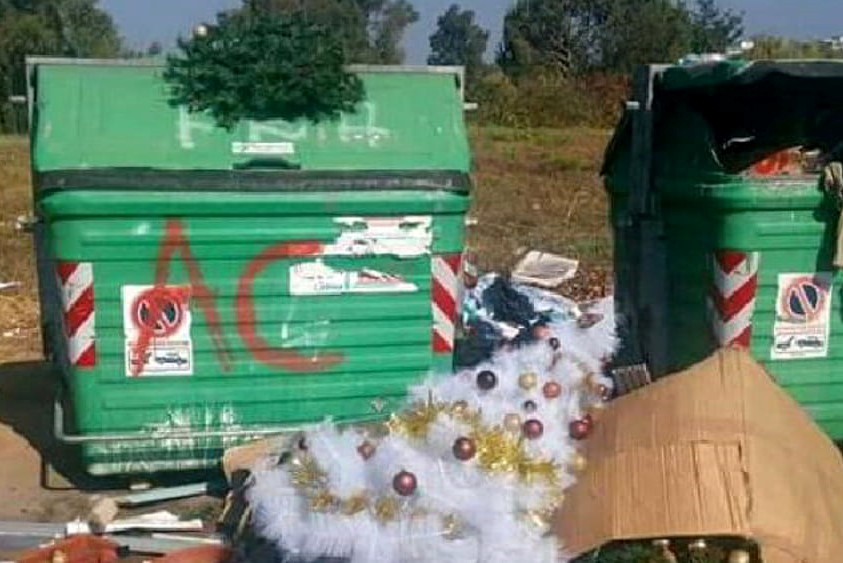
Climate change: the environmental impact of Christmas, how significant it is and how to reduce it
Climate change and Christmas: it has been observed that reducing one’s environmental impact makes people happier
How, then, can the significant pollution resulting from Christmas celebrations be reduced?
What are the most environmentally damaging behaviors during the holiday season?
Christmas shopping, travel, decorations: the environmental impact of this holiday is huge
It accounts for nearly 6 percent of the carbon dioxide that each of us produces annually: about 650 pounds of CO2 per person between December 24 and 26 alone.
The weight of about four male reindeer.
The environmental impact of Christmas is also increasing as more and more people around the world celebrate it according to the consumerist model.
Even in countries where Christians make up only one percent of the population as in China.
Christmas, polluting factors
Food consumption increases by about 80 percent during the Christmas season, compared to the rest of the year, with a significant environmental impact.
In Britain alone, more than ten million turkeys are consumed on Dec. 25, and a billion pounds of food is thrown away as more food is bought and cooked than can be eaten.
Another significant aspect is transportation.
Millions of miles are driven to reach family members for the holidays, resulting in more than fifty pounds of CO2 per person.
A weight equivalent to that of ten turkeys.
The Christmas decoration market also involves significant pollution.
Tens of millions of conifers sold as Christmas trees are cut down each year worldwide (fifteen million in the United States alone).
Tens of billions of decorations are used each December and hundreds of thousands of tons of plastic are used to wrap presents.
For every pound of plastic wrapping produced, the emissions equate to about three pounds of carbon dioxide.
In addition, wrapping papers are often not reused, sometimes ending up in landfills or water.
Each gift also has a significant environmental impact on its own.
For example, each piece of clothing that is given as a gift corresponds to the exploitation of dozens of liters of water and square meters of land; the production of the small electronic instruments given as gifts at Christmas altogether results in the emission of more than half a million tons of greenhouse gases.
An estimated four billion are spent each year on unwanted gifts, in the UK alone, equivalent to nearly five million tons of CO2. Together with those that will have broken, about 40 percent of toys given away at Christmas will be thrown away by March.
For an environmentally friendly Christmas
Through a few small gestures we can significantly reduce the ecological footprint of this holiday, with positive implications for ourselves as well.
Food
Buy from local, zero-mile economy.
Cook moderate portions and buy fewer packages of sweets.
Make sure organic leftovers are disposed of in the wet waste.
Travel
Take advantage of transportation methods that pollute less, such as train instead of car.
Use public services or car-sharing, to decrease emissions per capita.
Decorations
Reduce bright decorations as much as possible and keep them on only in the evening, turning them off before bedtime.
Reuse, rather than throw away, silver threads, balls, banners, etc.
Make decorations from paper, felt, fabric, pine cones, branches; or decorate with cookies and other edible items.
Shopping
Better fewer, more quality gifts so that they do not have to be replaced after a short time.
Alternative gifts: eco-friendly items, long-distance animal adoptions, prepaid cards, do-it-yourself items, tickets to events, time spent together.
Give unwanted gifts to those in need.
Avoid making unwanted presents ourselves by donating money instead.
Gift wrapping.
Use paper wrappings and bows.
Reuse from one year to the next.
Avoiding sending Christmas cards can also reduce environmental impact, by as much as five pounds of carbon dioxide each.
Following these tips can decrease individual Christmas impact by 60 percent.
A positive implication not only for the environment, but also for those who implement these tricks, as people who experience Christmas in a sustainable way are happier.
They also save money.
References
Kopnina H. (2014), Christmas tale of (un)sustainability: Reflecting on consumption and environmental awareness on the streets of Amsterdam. Sustainable Cities and Society, 10 pp. 65-71.
Haq G., Owen A., Dawkins E. & Barrett J. (2007), The carbon cost of Christmas. Stockholm Environment Institute: Stockholm, Sweden.
Hancock P. & Rehn A. (2011), Organizing Christmas. Organization 18:6, pp. 737-745
Business Leader (2018), The dark environmental impact of our Christmas season.
Read Also
Emergency Live Even More…Live: Download The New Free App Of Your Newspaper For IOS And Android
COP26, UN: “Extreme Weather Events Are The New Normal. Record Greenhouse Gas Emissions”
COP26: National Health Service (NHS) Hydrogen Ambulance Unveiled
UK Fire Brigade Raises Alarm Over UN Climate Report
Eco-Anxiety: The Effects Of Climate Change On Mental Health
COP27: The World Cannot Afford Another Set Of Vague Promises, Warns IFRC


